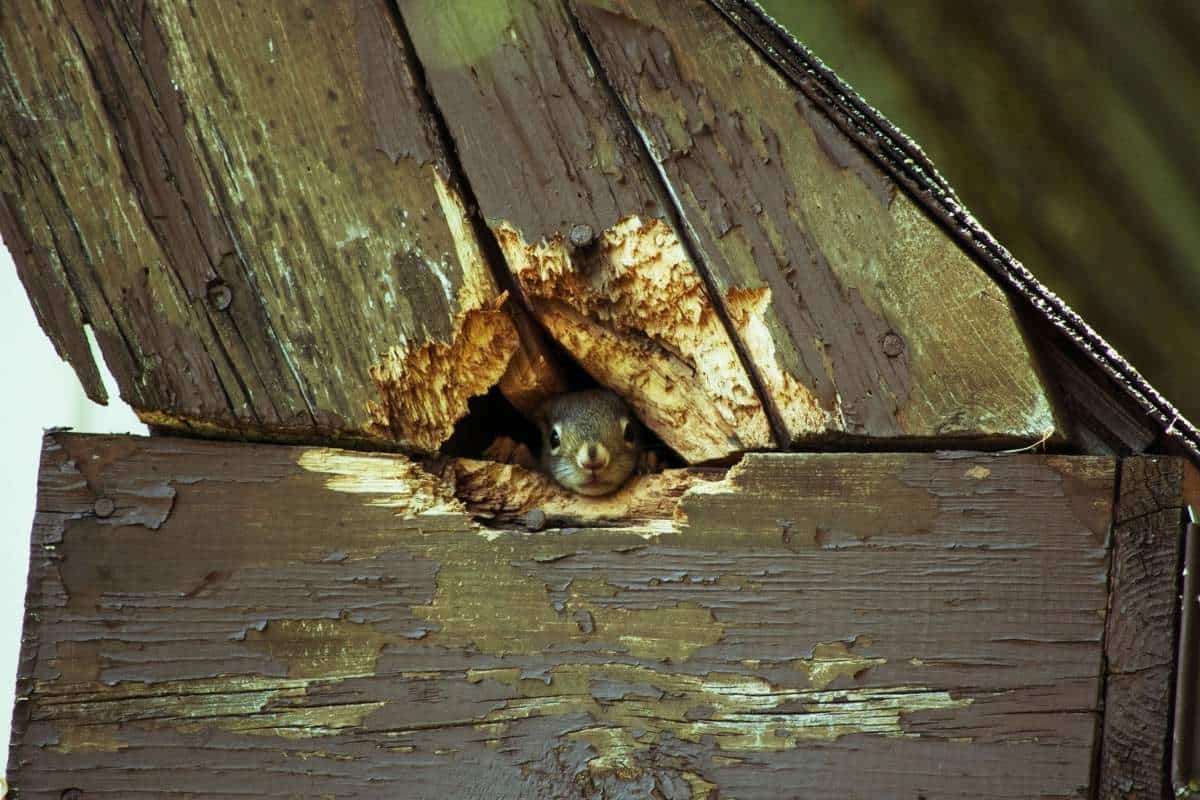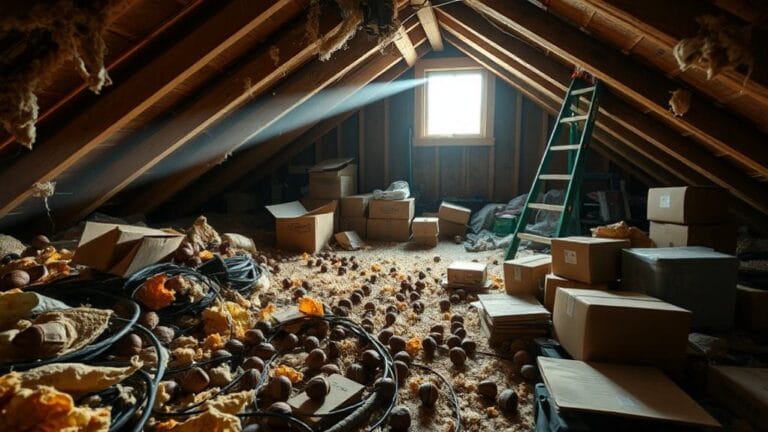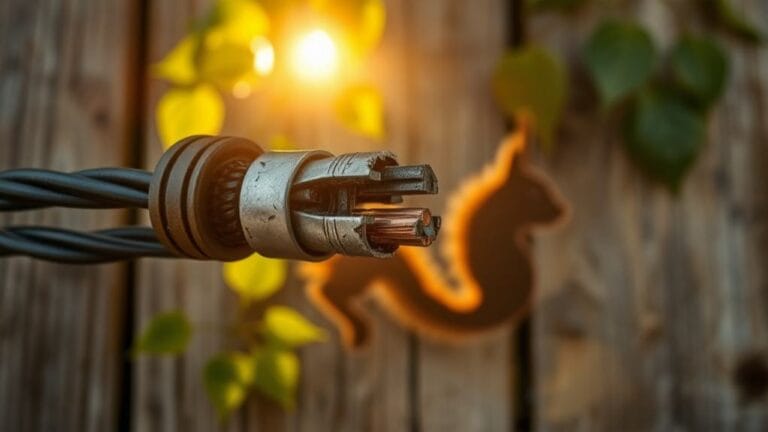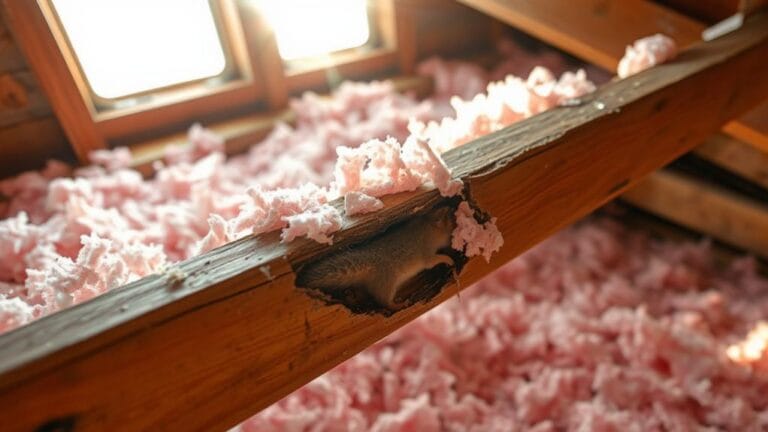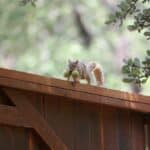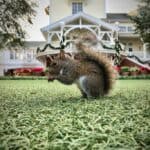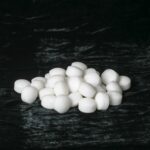Are squirrels invading your home? If you’ve noticed strange noises from your attic or seen a squirrel running around your property, they have likely made a nest in your house.
This blog will discuss identifying signs of a squirrel infestation, where these animals typically nest, and what can be done to prevent them from returning.
We’ll also provide information on how to spot a squirrel’s nest and the materials they use to build them.
By the time you finish reading this blog, you will know how to identify whether or not squirrels live in your home and what steps should be taken if they do.
Where do Squirrels Nest?
Table of Contents
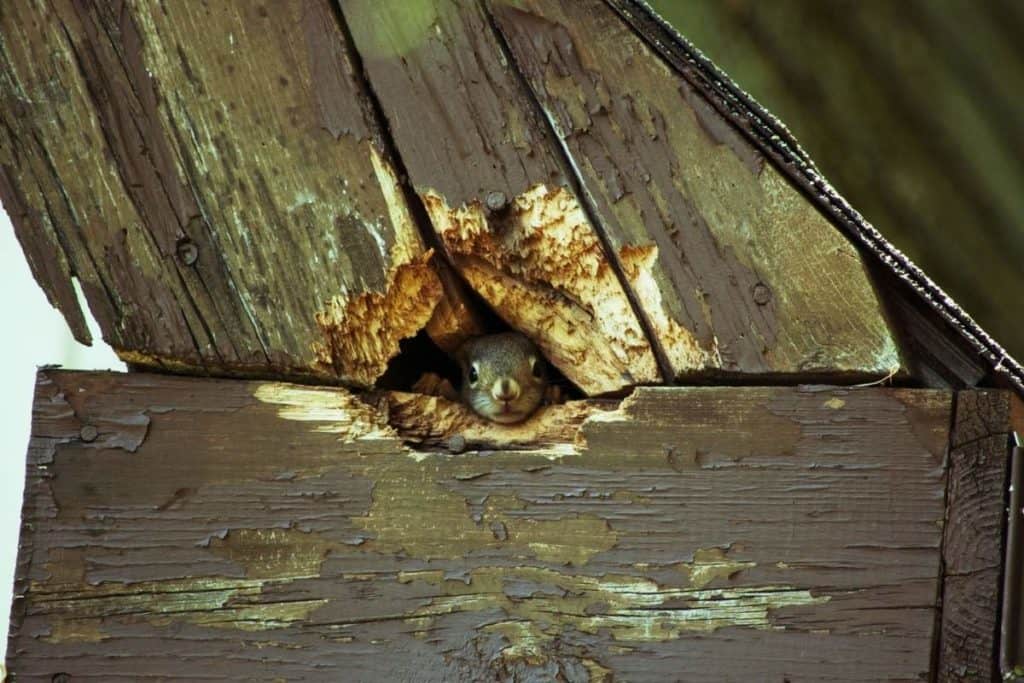
If you’re wondering where squirrels nest, the answer is that they can nest almost anywhere.
They are mainly opportunistic nest builders and will take advantage of whatever materials are accessible.
Common areas include attics, walls, and crawl spaces in homes.
Tree cavity dens or leaf nests can also be found in trees in the surrounding backyard.
In addition to these common areas, squirrels may also build nests in any place at least six meters from the ground.
These areas include close to the trunk of a tree or in forks of branches where the tree is more robust and provides more support for the nest.
If you think you may have a squirrel infestation, look for signs such as gnaw marks on wood, piles of nesting material, and droppings around the area.
Common Areas for Squirrels to Nest:
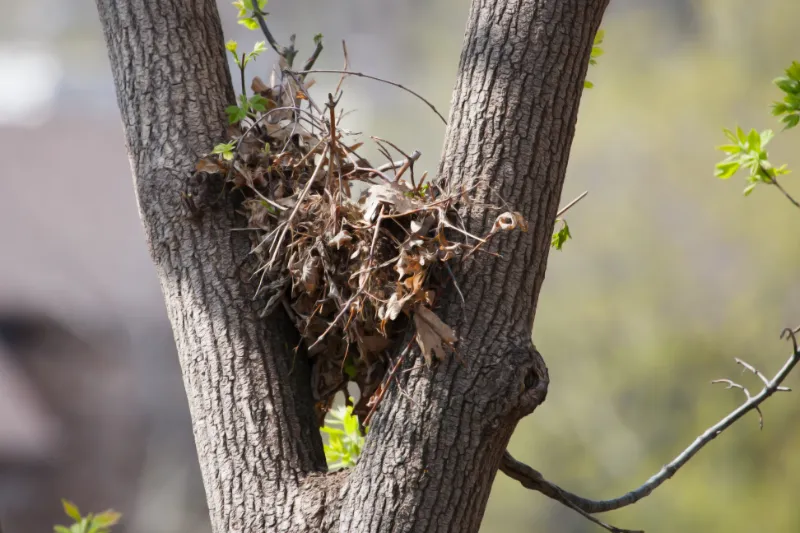
Squirrels nest in various locations, including attics, wall and crawl spaces, and even trees.
Attics are the most common area for squirrels to nest. However, they can also be found in other areas of your home.
Squirrels are opportunistic nest builders and will use whatever materials they can find.
If you suspect squirrels have made a nest in your home, look for clues such as nests made from twigs, leaves, and other materials in wall or crawl spaces.
Squirrels often nest near the trunk or in forks of branches where the tree is more robust and provides more protection.
Signs of Squirrel Infestation
It’s essential to spot the signs of a squirrel infestation, as they can cause a lot of damage to your home.
Squirrel droppings are a great indicator and are often found in garages, attics, or near entry points around your home.
You should also look for teeth marks on wooden beams, ductwork, soffits, and any chew marks or damaged electrical wiring.
If you notice an increase in noise coming from your attic or walls, it could signify a squirrel nest being built.
The Construction of a Squirrel Nest
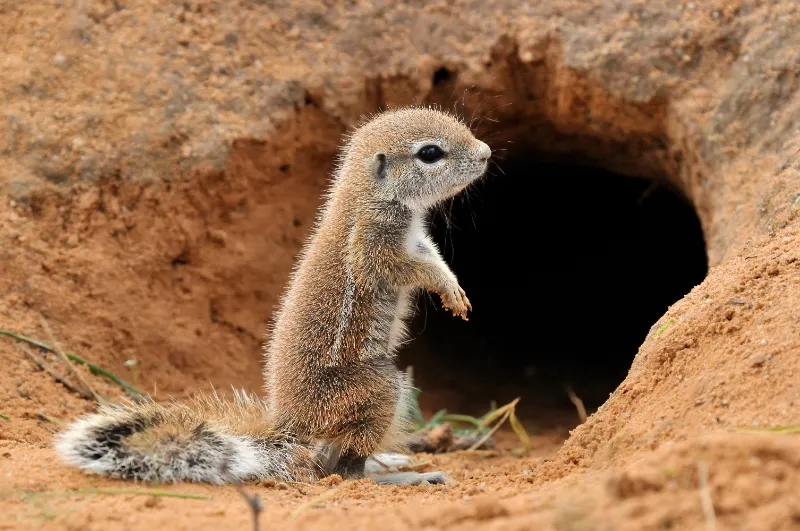
You may be surprised that squirrels are skilled builders when constructing their nests.
Their nests are typically made up of a platform of loosely woven twigs and vegetation lined with softer materials such as moss, leaves, grasses, and feathers.
The squirrel begins by roughly incorporating a forum and then adding more and more layers of materials until the nest is secure.
Depending on the type of squirrel, they will sometimes use mud or clay to help bind the structure together.
Squirrels will often nest in the crooks of branches or near the trunk, where their home is sturdy and less likely to fall prey to predators.
These nests provide insulation for the squirrels and their young during cold weather.
Some squirrels build nests in tree cavities rather than among the high branches.
Common Materials Used for Nests
When it comes to building nests, squirrels are known for their resourcefulness. They often use whatever materials are available to construct their dwellings.
Common materials used for nests include twigs, leaves, moss, grass, feathers, and other soft materials for the lining.
Damp leaves and moss provide better insulation than the dry lining, so this is commonly used as well.
Twigs are woven together as the nest floor to provide stability and support.
Using these materials, squirrels can create a warm and comfortable den that will serve them well during their stay.
Squirrels and Trees
Squirrels and trees have a symbiotic relationship that benefits both species.
Squirrels use trees for shelter, food sources, and nesting. Trees protect the squirrel from predators and provide a safe place to store food and build nests.
The squirrels also help spread the tree’s seeds and fertilize the soil around it, allowing it to grow and thrive.
While some squirrels may nest in homes or other structures, they prefer to use trees for their homes.
If you have noticed squirrels in your yard or near your home, there are likely trees nearby that provide them with a safe place to live.
Prevention Strategies
If you find evidence of a squirrel’s presence, it’s best to call a professional service to assess the situation and devise a removal plan.
- You can install metal screens on windows and vents to prevent them from entering your home.
- You can trim back trees and shrubs, as squirrels often use these as pathways into homes.
- Ensure all entry points are sealed off, and any holes or cracks in the exterior walls are filled with caulk or foam insulation.
- Keep your yard clear of food sources such as bird feeders and unsecured trash cans that attract squirrels.
Removal Strategies
Removal strategies are mandatory if you have a squirrel infestation in your home.
It is important to note that DIY removal of squirrels is not recommended; instead, a competent person should humanely dispatch the target species.
There are several ways to address the problem of squirrels in your yard, such as removing a tree or branches containing their nests and setting live capture traps.
It is also essential to consider the time of year when removing squirrels, as they can mate two times per year, and the presence of young may complicate the process.
By following the proper removal strategies, you can help protect your home from potential fire hazards caused by nesting material, as well as help protect the local red squirrel population.
Conclusion
In conclusion, squirrels can nest in houses but prefer building nests in trees.
Knowing the signs of squirrel infestation and identifying the materials used for nests can help prevent a squirrel infestation in your home.
If you find an infestation, removal strategies are available to help eliminate them.
Awareness of the common areas where squirrels nest and preventing access to those areas is critical to keeping your home safe from a squirrel infestation.

